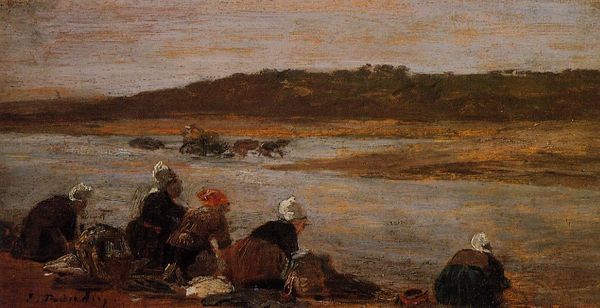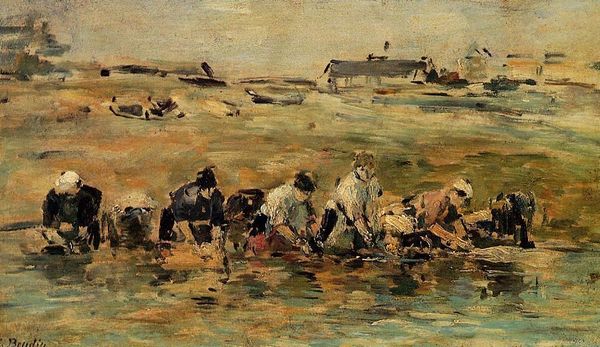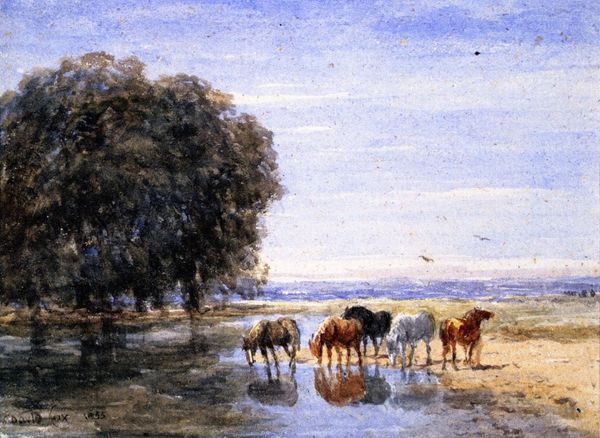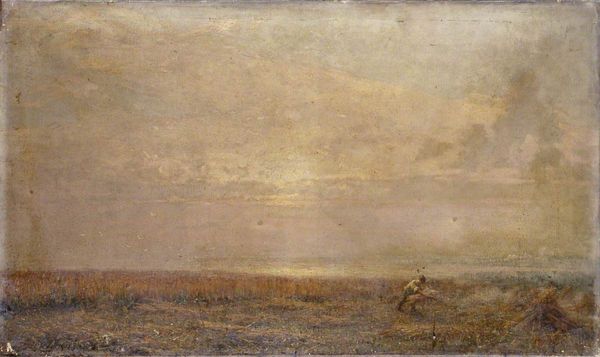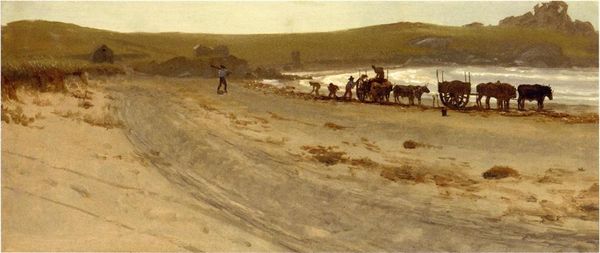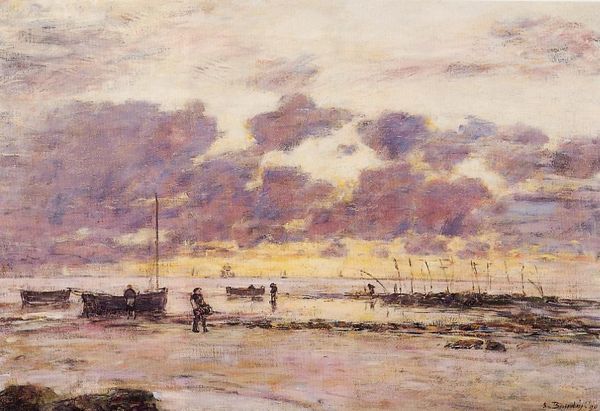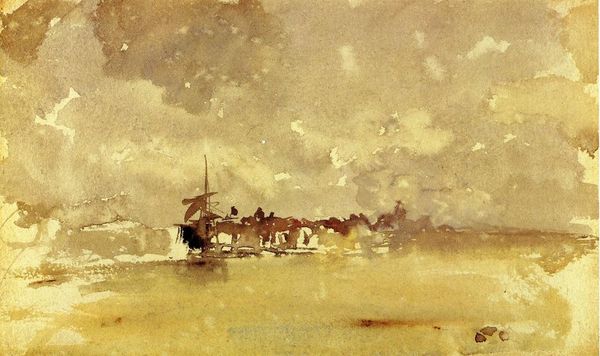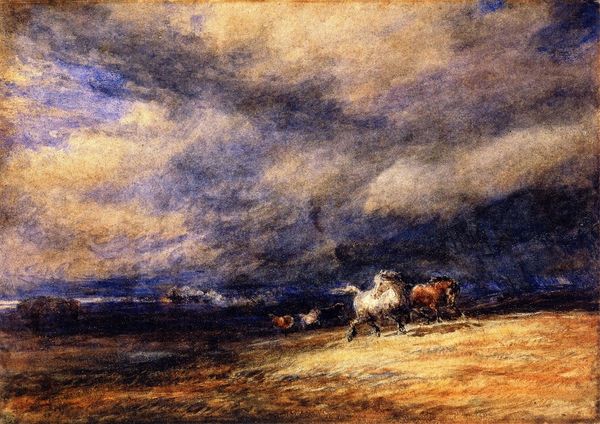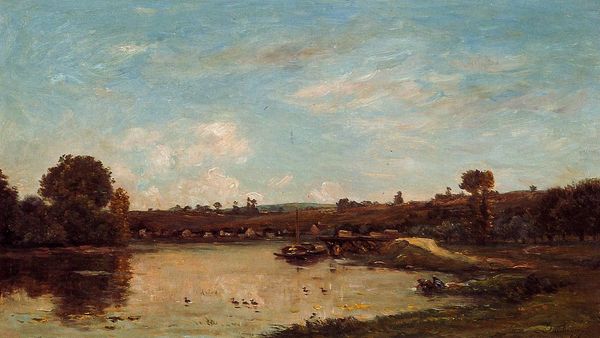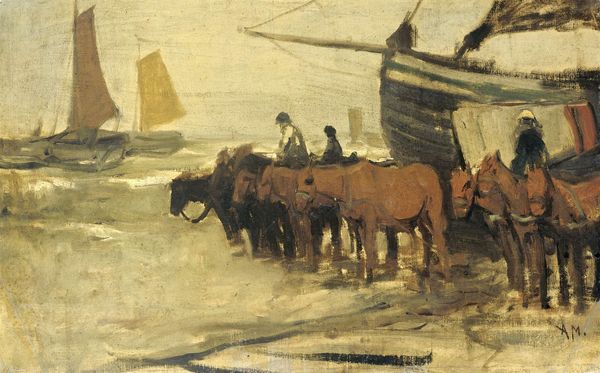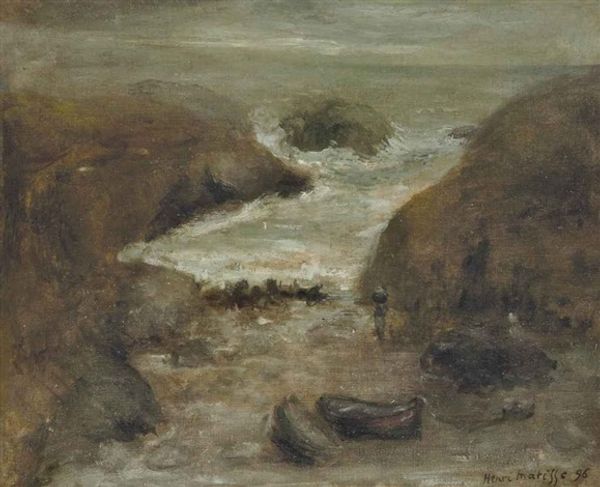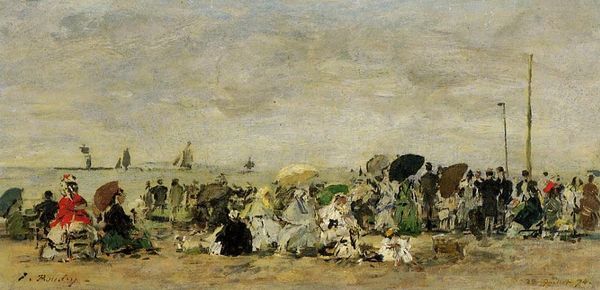
Copyright: Public domain
Editor: Here we have Frederick Carl Frieseke’s “Horse in a Field Watercolor” from 1899. It’s... interesting. The colors are muted, almost blending into each other. What do you see in this piece, something beyond the obvious Impressionistic style? Curator: This watercolor presents us with more than just a pastoral scene. I see a subtle commentary on labor and rural life at the turn of the century. Notice how the horse is the central figure, yet seemingly unburdened, standing passively. What do you make of that passivity in relation to its historical context? Editor: Hmm… You mean like the social position of rural communities at that time? Was Frieseke maybe commenting on the relative power, or lack thereof, of farmers? Curator: Precisely! Think about the industrial revolution and its impact on agriculture. The Impressionists, in their focus on everyday life, often captured these societal shifts. Also, note the lone figure in the background—seemingly working. How does that figure contrast with the horse? Editor: So, while on the surface it looks like a peaceful landscape, Frieseke subtly hints at the socio-economic realities impacting these individuals and their livelihoods. Is that what you're suggesting? Curator: Yes. The hazy, indistinct figures aren’t just Impressionistic technique; it speaks, perhaps, to a marginalized existence. And considering Frieseke's background as an American artist working in France, his gaze may be colored by his outsider status. Editor: That's fascinating. I had only seen it as a simple depiction of farm life, but now it’s clear that there are a lot of important points of discussion there. Curator: Exactly, and by examining those elements together, we start to piece together the historical and social narrative woven within.
Comments
No comments
Be the first to comment and join the conversation on the ultimate creative platform.
